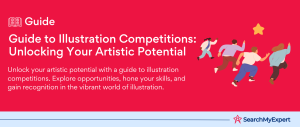Promoting Diversity in Illustration
The Striking Gap: A Look at Diversity in Illustration
Imagine this: In a sea of illustrated characters and stories, only a handful represent the rich tapestry of our global community. Shockingly, recent studies reveal that a staggering 70% of illustrated characters in mainstream media represent a narrow demographic, leaving a wide spectrum of cultures and identities vastly underrepresented.
Why Does This Matter?
Illustration, more than just art, is a mirror to society. It shapes perceptions, fuels imaginations, and can either reinforce stereotypes or shatter them. When illustrations fail to reflect the diverse world we live in, they create a skewed reality, impacting not just current viewers but also future generations.
Our Collective Goal
This glaring gap brings us to our core mission – promoting diversity in illustration. It’s not just about adding colors to a palette; it’s about weaving a fabric that genuinely represents the diverse world we inhabit. By championing diversity in illustration, we can create a more inclusive, understanding, and empathetic society.
Challenges to Diversity in Illustration
Navigating the Roadblocks: Overcoming Historical and Systemic Challenges
- The Echoes of History: The realm of illustration has not been immune to the biases that have shaped our societies. Historically, this industry was dominated by a narrow demographic, leading to a myopic representation of the world. This legacy has a lingering effect, creating a cycle where underrepresented groups struggle to find their place in the narrative tapestry of illustration.
- The Gatekeepers’ Grip:
Today, the illustration industry still grapples with gatekeeping. Opportunities for artists from marginalized communities are often limited, overshadowed by established norms and networks that favor a certain demographic. This gatekeeping goes beyond just individuals; it’s embedded in institutional practices, limiting access and perpetuating a homogenous landscape. - The Harm of Stereotypes:
When diversity is attempted, it often falls prey to stereotypes and harmful tropes. These caricatured portrayals not only misrepresent but also reinforce negative biases, undermining the very essence of diversity. It’s a double-edged sword – on one hand, the craving for representation; on the other, the risk of reinforcing stereotypes.
In tackling these challenges, we must acknowledge and address the historical roots, dismantle gatekeeping structures, and conscientiously avoid stereotypes. Our goal is to pave a way for a truly diverse and inclusive world of illustration, where every stroke and color reflects the multifaceted nature of our society.
Benefits of Promoting Diversity
The Transformative Power of Diversity in Illustration
- A Richer Palette of Perspectives:
When the world of illustration embraces diversity, it’s like opening a window to a myriad of cultures, experiences, and stories. Diverse voices bring depth, authenticity, and a wealth of perspectives that enrich the art form. Each unique background and experience adds a layer of complexity and nuance, transforming illustration from mere drawings to powerful narratives. - Empowering Viewers, Breaking Stereotypes:
Seeing oneself reflected in art is a powerful experience, particularly for those from marginalized communities. This representation not only empowers but also challenges prevailing stereotypes. It fosters a deeper understanding and empathy among viewers, bridging cultural and social divides. The impact of diverse illustration extends beyond the canvas, influencing perceptions and conversations in the real world. - Unveiling Commercial Opportunities:
Embracing diversity isn’t just a moral imperative; it’s a smart business strategy. In an increasingly globalized world, audiences crave authentic and varied representations. Diverse illustrations can tap into new markets and appeal to a broader audience, unlocking untapped commercial potential. By diversifying, the illustration industry can expand its reach and resonate with a global audience, transcending cultural and geographical boundaries.
In essence, promoting diversity in illustration is a win-win. It enriches the art form, empowers viewers, and opens up new commercial avenues. It’s about painting a picture that everyone can see themselves in, creating a more inclusive and vibrant world of art.
Strategies for Promoting Diversity
Crafting a More Inclusive Future: Practical Approaches to Diversity
- Seeking Out Diverse Talent:
The first step in promoting diversity is to actively seek out artists from underrepresented communities. This involves more than just waiting for applications to come in; it requires proactive measures. Talent scouts and agencies should extend their networks to include communities and schools that have been historically overlooked. Offering scholarships, mentorship programs, and internships can also help bridge the gap, giving aspiring artists from diverse backgrounds the support they need to thrive. - Showcasing Diversity Through Exhibitions and Platforms: Exhibitions, publications, and online platforms play a crucial role in amplifying diverse voices. Curating these spaces to showcase a wide range of perspectives is essential. This not only includes featuring artists from various backgrounds but also ensuring diversity in themes, subjects, and styles. By creating inclusive platforms, the industry can offer a stage for stories that might otherwise go unheard.
- Empowering Through Education:
Education is a powerful tool in the quest for diversity. Offering workshops, seminars, and resources focused on inclusivity and diversity can enlighten aspiring artists and industry professionals. These educational initiatives should cover not just the importance of diversity but also practical ways to incorporate it into their work. By educating the current and future generations of illustrators, we can embed a culture of diversity that will grow and evolve with time.
Implementing these strategies requires commitment and effort, but the payoff is immense. By actively seeking diverse talent, curating inclusive platforms, and providing educational resources, we can make strides towards a more diverse and inclusive illustration industry.
Role of Individuals and Institutions
Each Stroke Counts: Empowering Change at Every Level
- Artists as Champions of Diversity:
Artists themselves are at the forefront of this transformative journey. They are encouraged to not only create diverse work but also to be vigilant against stereotypes. By advocating for inclusive practices within their networks and platforms, artists can influence the broader industry. Their role extends beyond their art; it includes being a voice and a force for change, championing diversity in every brushstroke. - Clients and Commissioners: Paving the Way for Change: Those who commission art have a powerful influence. They are urged to seek out and support diverse artists, ensuring that a wide range of voices are heard and seen. It’s crucial for clients and commissioners to reject projects that perpetuate stereotypes, instead favoring works that celebrate diversity and inclusivity. Their choices can have a ripple effect, encouraging a more diverse artistic landscape.
- Educational Institutions: Shaping the Future of Art: The role of educational institutions in promoting diversity cannot be overstated. They are tasked with integrating diversity and inclusion into their curriculums, moving beyond traditional canons to include a broader spectrum of artistic expressions. By exposing students to diverse artists and styles, and critiquing the traditional canon, these institutions can foster a new generation of artists who naturally incorporate diversity into their work.
The combined efforts of individual artists, clients, commissioners, and educational institutions are crucial in forging a path towards a more inclusive and diverse world of illustration. Each entity plays a unique role, contributing to a collective movement that reshapes the industry for the better.
Measuring Progress and Addressing Challenges
Tracking the Journey: Metrics for Success and Overcoming Barriers
- Setting and Achieving Tangible Goals: For meaningful change in diversity, it’s crucial to set concrete, measurable goals. This could involve specific targets like the percentage of diverse artists featured in exhibitions, the variety of themes in collections, or initiatives to support underrepresented artists. Monitoring progress against these goals over time is essential. It’s not just about setting benchmarks; it’s about actively working towards and reassessing them regularly.
- Facing Challenges Head-On:
Implicit bias and unconscious decision-making are significant hurdles in achieving true diversity. These challenges must be openly acknowledged and addressed. Institutions and individuals can engage in bias training, invite external audits, and encourage open dialogues to uncover and tackle these issues. By facing these obstacles directly, the industry can develop effective strategies to mitigate them. - Embracing Continuous Learning:
The pursuit of diversity is an ongoing journey, not a destination. It requires continuous learning, adaptation, and evolution. The industry must remain open to new ideas, feedback, and changes in societal norms. This means regularly updating curriculums, revisiting policies, and staying attuned to the evolving landscape of diversity and inclusion. Only through sustained effort and adaptability can the illustration industry continue to progress toward truly embracing diversity.
By setting clear goals, openly addressing challenges, and committing to continuous learning, the illustration industry can ensure that its efforts to promote diversity are not just momentary, but part of a lasting and impactful change.
Conclusion
As we conclude this journey through the multifaceted world of diversity in illustration, let’s not forget that the power to effect change lies in each of our hands. Whether you’re an artist, a client, an educator, or simply an admirer of art, your actions can make a significant impact.
Artists, let your canvases be a reflection of the diverse world we inhabit. Clients and commissioners, choose to support and showcase diverse talents and narratives. Educators, weave the threads of diversity and inclusion into the fabric of your teaching.
Remember, every stroke of the brush, every choice of subject, and every educational lesson contributes to a larger picture – one where every color, line, and shadow plays a crucial role. Our collective efforts in promoting diversity in illustration are not just about creating art; they’re about shaping a world that recognizes, celebrates, and embraces the full spectrum of human experience.
In the grand canvas of life, let us paint a picture so diverse and so inclusive that it inspires generations to come, reminding them of the beauty and strength found in our differences. This is our call to action – to create, to choose, to teach, and to transform the world of illustration into a vibrant reflection of the world we all share.
Collaborate with top Illustrators Agencies for stunning artwork.
Table of Contents
Toggle






